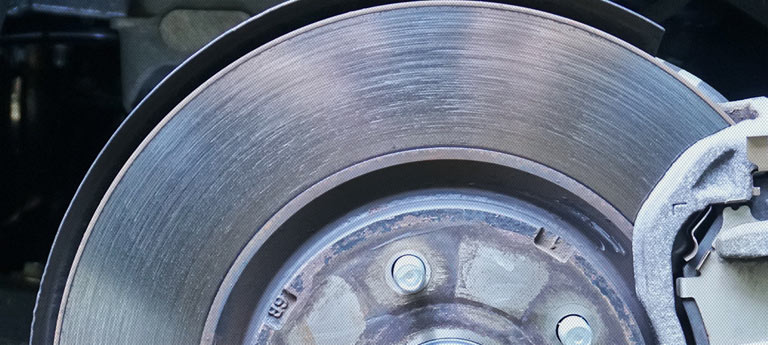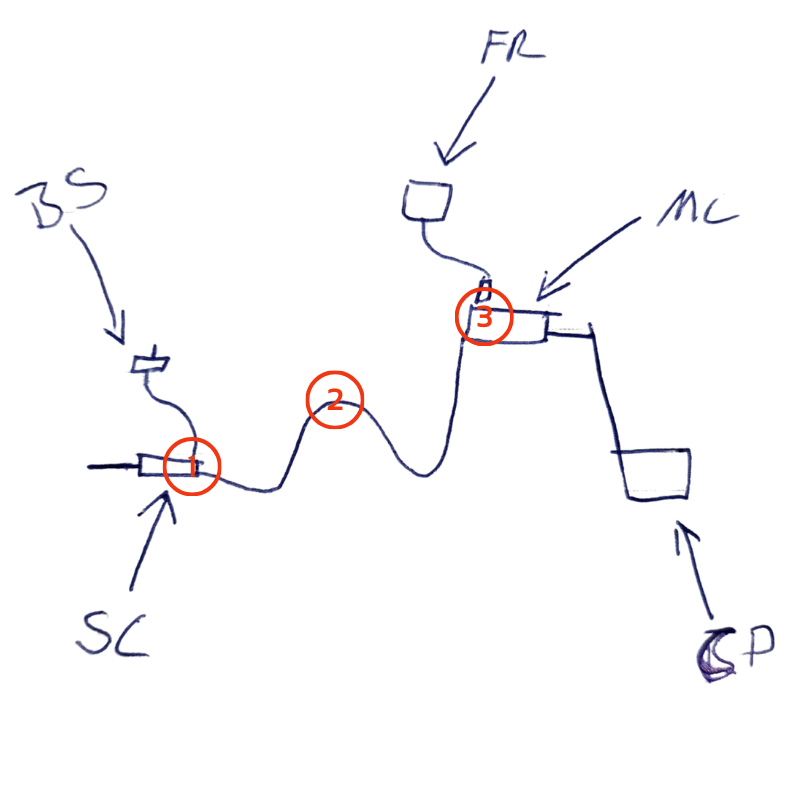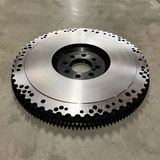How to bleed the brakes? (and the clutch)

Information on bleeding brakes on a car
- Why do you bleed the brakes / clutch?
- How to bleed your brakes / clutch
- Air in the brake system
- Uneven braking power
1 ▼
Why do you bleed the brakes / clutch?
You bleed your brakes to remove moisture that has entered the system. Brake fluid needs to be replaced at regular intervals, as brake fluid absorbs moisture over time. This occurs regardless of whether a vehicle has been driven 20,000 miles or has been in a garage for a year.
"Fluid contamination" in the brake fluid is a result of time and humidity and has nothing to do with mileage. Moisture enters the brake system through seals and through microscopic pores in the hoses. Moisture enters the system every time the fluid reservoir is opened, which is a good reason not to open it unnecessarily.
The air must be removed as it is compressible and will result in a soft, "spongy" brake pedal resulting in poor braking performance.
2 ▼
How to bleed your brakes / clutch
- Step 1 - Basic
Always start at the farthest corner from the driver and work towards the driver / master cylinder (right rear, left rear, right front, left front.), just remember: Start with the caliper farthest from the master cylinder and work your way towards the master cylinder.
Next, locate the bleed screw (bleed valve) on the rear caliper.
Attach a piece of clear tubing to the nipple of the vent screw. Place the other end of the hose in a bottle, preferably filled with brake fluid so that the end of the hose can lie below the surface.
Then take a tool to open the bleeder screw.
Place the spill fluid bottle on top of the brake caliper. Hold the bottle with one hand and grasp the tool with the other hand.
- Step 2 - Procedure
Then have a friend put pressure on the brake pedal and hold it down firmly.
Then open the vent screw ¼ turn to release the liquid into the drain line. NEVER let your friend release the brake pedal while the screw is open, make sure to CLOSE the screw first and then release the brake pedal. Watch for air bubbles in the jar.
Continue this process until there are no air bubbles in the jar.
Be sure to check the brake fluid level in the reservoir after bleeding each wheel, making sure to keep the fluid level at the MAX line.
Then move on to the next corner and repeat all the steps.
Remember! right rear, left rear, right front, left front.
- Step 3 - Completion
Then clean with brake cleaner and wipe until dry.
DO NOT SPRAY BRAKE CLEANER ON BRAKE PADS, RUBBER OR PLASTIC PARTS.
Always keep clean and dry and it will be much easier to detect leaks.
Test the brake pedal for firm feel, and if all steps have been followed, you are now done bleeding your brakes.
Dispose of all used brake fluid correctly and responsibly.

BS = Bleed screw
SC = Slave cylinder
FR = Fluid reservoir
MC = Master cylinder
CP = Clutch Pedal
Air gets trapped in the high points of a brake system and clutch system. with that said it doesn't have to be the highest points. See the image for example of where air can get stuck:
- Slave cylinder
- Brake lines with high placement
- Master cylinder
2. How do I fix these problems?
- Slave cylinder
Install a bleed screw to the slave cylinder or a bleed screw higher-positioned than the slave cylinder itself. - Brake lines with high placement
Route brake lines as low as possible to avoid air to get stuck. - Master cylinder
Make sure the brake fluid reservoir is positioned above the master cylinder.
3. What products are there?
- Slave cylinder
Use this bleed screw to bleed the clutch easily. You build a custom hose here. - Brake lines with high placement
Brake lines, fasteners and tools for this can be found here. - Master cylinder
Use master cylinder with integrated reservoir or these external reservoirs.
3 ▼
Air in the brake system
- The lid is on the reservoir
Do not forget to unscrew the lid of the container when aerating. - The piston of the master cylinder is pressed in at "rest position"
If the rest position of the pedal means that the piston of the master cylinder is pushed in a little, it can restrict the inflow of new fluid and bleeding of the brakes can be difficult. - Slave cylinder or brake pistons are not in their outer rest position.
This means that a clearance exists before the slave cylinder / pistons reach their working position. Then the pedal path becomes unnecessarily long and it is perceived as play/air in the system. - Leakage in the brake system
Sometimes leaks can be hard to find. Leakage should be visible but is not always completely obvious. - Air pockets in brake pipe/hose
Sometimes when the system is rebuilt, the highest point in the brake system can be in a hose or brake pipe. An air pocket can form there, and since there is no air nipple, it can be difficult to get rid of this air. Then try different ventilation methods.
1. Two friends who help where one presses the pedal and one screws the air nipple.
2. Brake/clutch reservoir is pressurized
3. Vacuum suction the bleed nipple
If the air pocket still does not release, the pipe/hose must be routed elsewhere. If this does not work, an bleed screw/nipple must be mounted at the highest point so that the air can be vented from the system.
4 ▼
Uneven braking power
If the car pulls sideways when braking, there is a difference between the left and right side of the car. Below we list some things that are common problems.
- Wheel alignment
- Brake pads
- Brake hose
- Brake caliper, sliding pins and pistons
- Brake bleeding
- Other restriction in the braking system.
NOTE. It does not matter if hoses or pipes have different length between the different sides.
▼
▼
-
Brake system
- Brake system: Parts and installation
- Brake bias bar
- Brake distribution valve installation
- Brake fitting - Convex or concave
- Brake fittings (Video)
- Brake fluid information
- Brake pipe flaring
- Carbotech: Choose the right brake pads
- How to bleed your brakes?
- Master brake cylinder: What size should I have on my master brake cylinder?











































